Presenting All the:

I'm back,and now i have some kinda good aircraft
Anways let's get into info
About DC-9-31(Wikipedia):
The McDonnell Douglas DC-9 is an American five-abreast, single-aisle aircraft designed by the Douglas Aircraft Company. It was initially produced as the Douglas DC-9 prior to August 1967, after which point the company had merged with McDonnell Aircraft to become McDonnell Douglas. Following the introduction of its first jetliner, the high-capacity DC-8, in 1959, Douglas was interested in producing an aircraft suited to smaller routes. As early as 1958, design studies were conducted; approval for the DC-9, a smaller all-new jetliner, came on April 8, 1963. The DC-9-10 first flew on February 25, 1965, and gained its type certificate on November 23, to enter service with Delta Air Lines on December 8.
DC-9
A Northwest Airlines DC-9 in 2007.
The DC-9 is powered by two rear-mounted Pratt & Whitney JT8D low-bypass turbofan engines under a T-tail for a cleaner wing aerodynamic. It has a two-person flight deck and built-in airstairs to better suit smaller airports. The Series 10 aircraft are 104 ft (32 m) long for typically 90 coach seats. The Series 30, stretched by 15 ft (4.5 m) to seat 115 in economy, has a larger wing and more powerful engines for a higher maximum takeoff weight (MTOW); it first flew in August 1966 and entered service in February 1967. The Series 20 has the Series 10 fuselage, more powerful engines, and the Series 30's improved wings; it first flew in September 1968 and entered service in January 1969. The Series 40 was further lengthened by 6 ft (2 m) for 125 passengers, and the final DC-9-50 series first flew in 1974, stretched again by 8 ft (2.5 m) for 135 passengers. When deliveries ended in October 1982, 976 had been built. Smaller variants competed with the BAC One-Eleven, Fokker F28, and Sud Aviation Caravelle, and larger ones with the original Boeing 737.
The original DC-9 was followed by the second generation in 1980, the MD-80 series, a lengthened DC-9-50 with a larger wing and a higher MTOW. This was further developed into the third generation, the MD-90, in the early 1990s, as the body was stretched again, fitted with V2500 high-bypass turbofans, and an updated flight deck. The shorter and final version, the MD-95, was renamed the Boeing 717 after McDonnell Douglas's merger with Boeing in 1997; it is powered by Rolls-Royce BR715 engines. The DC-9 family was produced between 1965 and 2006 with a total delivery of 2441 units: 976 DC-9s, 1191 MD-80s, 116 MD-90s, and 155 Boeing 717s. As of August 2022, 250 aircraft remain in service: 31 DC-9s (freighter), 116 MD-80s (mainly freighter), and 103 Boeing 717s (passenger), while the MD-90 was retired without freighter conversion.
About TAESA Airlines:
TAESA (Transportes Aéreos Ejecutivos S.A.) was a low cost airline with its headquarters in No. 27 of Hangar Zone C on the grounds of Mexico City International Airport in Mexico City, Mexico.[1]

IATA:GD
ICAO:TEJ
Callsign:TRANSEJECUTIVOS
TAESA Flight 725
TAESA Flight 725 was a scheduled flight originating in Tijuana International Airport and ending at Mexico City International Airport with intermediate stopovers in Guadalajara and Uruapan, that crashed shortly after departure from the latter city's airport on November 9, 1999, killing all 18 passengers and crew on board.[1] The crash led TAESA to ground its fleet and suspend operations a year later in 2000.[2]
TAESA Flight 725
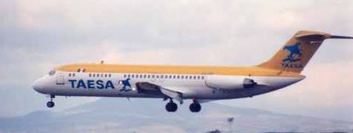
XA-TKN, the aircraft involved in the accident
Investigators determined that the crew did not use the appropriate checklists prior to departure, and during the climbout, the pilots were confused about which heading to follow. Spatial disorientation was also believed to be a factor in the crash.[3]
That's All
Enjoy!
Specifications
Spotlights
- CaptainBrayden 1.2 years ago
- oldmate52 1.7 years ago
General Characteristics
- Predecessor McDonnell Douglas DC-9-31 Cebu Pacific
- Successors 1 airplane(s)
- Created On Android
- Wingspan 94.7ft (28.9m)
- Length 122.8ft (37.4m)
- Height 30.4ft (9.3m)
- Empty Weight 7,375lbs (3,345kg)
- Loaded Weight 87,138lbs (39,525kg)
Performance
- Power/Weight Ratio 0.495
- Wing Loading 39.9lbs/ft2 (194.7kg/m2)
- Wing Area 2,184.7ft2 (203.0m2)
- Drag Points 6986
Parts
- Number of Parts 1061
- Control Surfaces 7
- Performance Cost 4,078

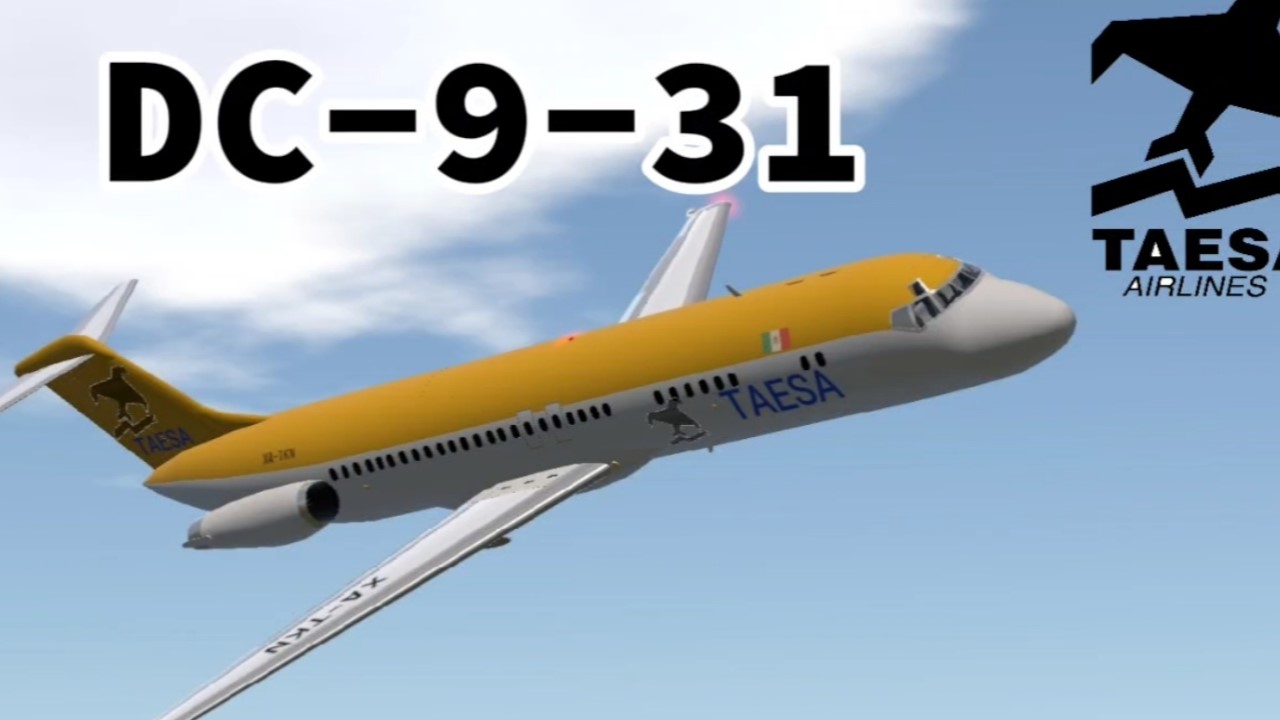
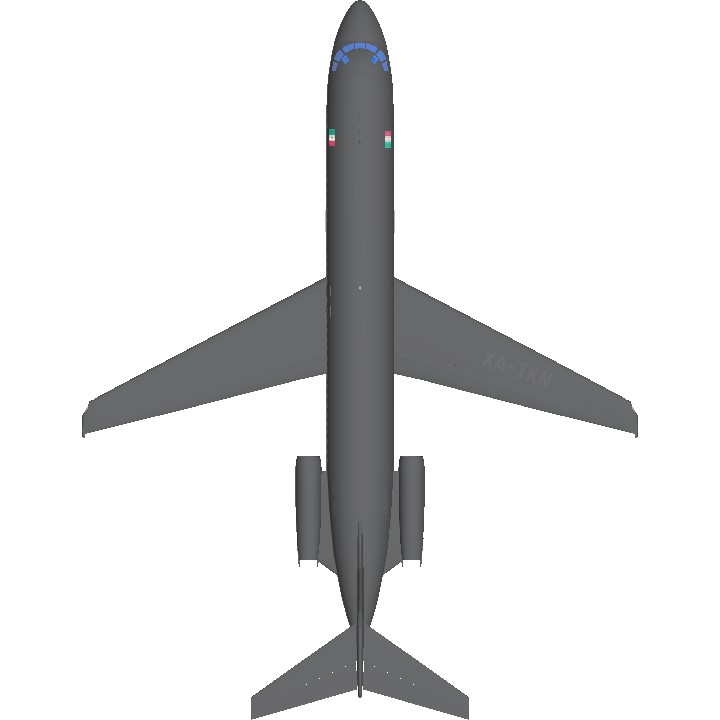
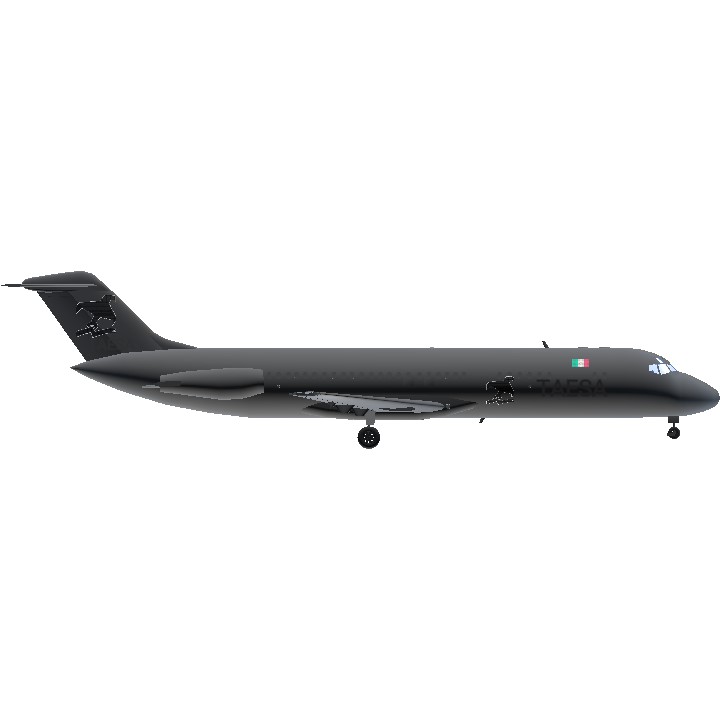
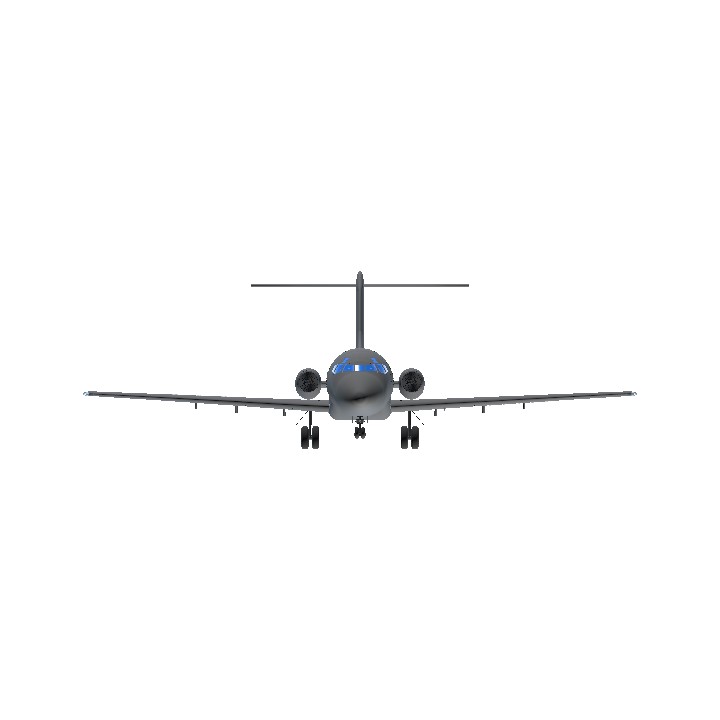
Credits to:
@AS49 For DC-9-31
Woah,epic upvotes
Uhh this isn't having so much support..
@GuardianAerospace Thxxx<3
Congrats on 2k!